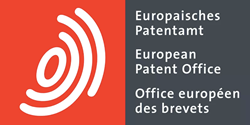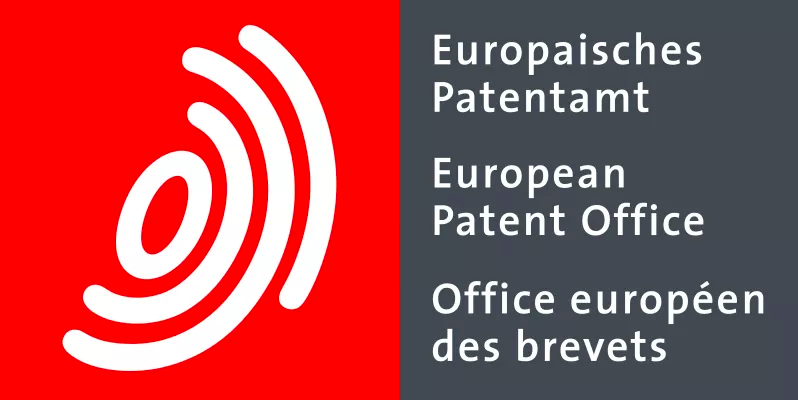
Pi and He’s technology delivered an industry-leading biometric solution. Their invention shows how innovation can help protect our privacy and security.
MUNICH (PRWEB)
May 04, 2021
The European Patent Office (EPO) announces that the Chinese-American innovators Bo Pi and Yi He have been nominated for the European Inventor Award 2021 for developing the world’s first fingerprint sensor able to check both a fingerprint’s pattern and the presence of live blood flow. Named as finalists in the “Non-EPO countries” category, their technology protects users against fake fingerprint copies, which can be used to access smartphones or other protected devices unlawfully.
Pi and He’s ground-breaking sensor was developed for the Chinese multinational Shenzhen Goodix Technology. The technology is a key security feature in many smartphone models, with additional fingerprint verification applications planned by Goodix in the coming years.
“Pi and He’s technology delivered an industry-leading biometric solution. Their invention shows how innovation can help protect our privacy and security,” says EPO President António Campinos, announcing the European Inventor Award 2021 finalists. “For the inventors, protecting their intellectual property with patents helped facilitate cooperation, attract licensing partners and helped their technology gain a foothold in multiple markets.”
The winners of the 2021 edition of the EPO’s annual innovation prize will be announced at a ceremony starting at 1:00 pm EDT (19:00 CEST) on June 17, which has this year been reimagined as a digital event for a global audience.
Making fingerprint authentication secure
Most smartphones now have fingerprint scanners for identification verification in unlocking a device, payments, and other mobile operations. However, using these comes with risks: conventional fingerprint sensors are vulnerable to ‘spoof attacks’, whereby they are fooled by a 2D rendering of a fingerprint or a 3D fake made from substances such as silicone.
A solution took seed in 2013 when Goodix decided to expand into the fingerprint sensor sector, and Pi and He were chosen to lead the company’s live authentication R&D department. Although inspired by the release of the first fingerprint scanning technology, the duo quickly saw that these early scanners could be fooled by spoof attacks. “We thought it wasn’t good enough, so we started building something new,” recalls He.
Drawing on their combined expertise – Pi as a technologist with extensive electrical sensing knowledge, and He as a former optoelectronics professor who had worked in fibreoptics and on optical devices – the pair decided to overhaul the authentication process to reduce this risk. They first noticed that infrared light sensing used by doctors can, over time, measure heartbeats – the radiant energy of the light is reflected differently as pulses of blood ebb and flow through finger tissue. They hypothesized that this could also be used to tell how much, if any, blood is flowing through an object placed on a fingerprint sensor. They also saw that when a finger presses against a sensor, blood is pressed out of the capillaries in the tissue, and with less blood flowing through the finger, the amount of light reflected changes.
This realization prompted He to develop an optical sensor module and matching software that could capture this change. It emits infrared light when triggered, the amount of light reflected by the object pressing is then captured by photodetectors and the module compares this with values expected from a human finger. It simultaneously activates a conventional capacitive sensor that traces a map of where a fingerprint’s conductive ridges hit the conductive plate. This two-factor authentication process proved to be the key to combatting spoof attacks. “Now, we combine multiple fingerprint sensing technologies to tell if a fingerprint is alive and correct, so this technology is much harder to be fooled,” says He.
Following the successful development phase, the two filed a patent application for the integrated sensor technology in 2014 via Goodix and were granted a European patent in 2018. Following its launch in late 2016, the sensor developed by Pi and He has quickly gained prominence. Their invention brings a safer and more convenient user experience to consumers around the world.
Patents are the basis for this success. “This is particularly important for us because our sensors are manufactured by authorised third-party companies. That’s why we have to share all technical details with them – and patents are the only way to protect our technology,” says Pi.
Protection spanning the smartphone market – and beyond
Pi and He’s invention was commercialised by Goodix, which currently has around 2,200 employees and operates in Europe, Asia, and the U.S., with a revenue of about $986 million USD. While it is best known for its fingerprint verification smartphone sensors, it is also a world leader in human interface and biometric solutions for mobile devices across many other sectors.
The sensors developed by the two inventors were integrated into smart locks from smart home solution provider Yunding Network Technology in 2018 – the same year Goodix acquired the German wireless solutions company CommSolid as part of its plans to offer its products for logistic systems, transportation, and industrial applications. In 2020, it also acquired the German semiconductor company Dream Chip Technologies.
As for Pi and He, they continue their work, operating as an innovation tag-team – with Pi travelling to research challenges faced by Goodix clients, while He explores how to overcome them. They remain committed to coming up with ingenious, original solutions to problems that are different from their competitors.
About the inventors
Dr Bo Pi was born in Chengdu, China, on 16 April 1965. Pi completed a bachelor’s degree in physics at Fudan University, in Shanghai, China, before moving to Michigan in the United States for a PhD in physics at Michigan State University, which he finished in 1992. He took up the position of Shenzhen Goodix Technology Inc. CTO/COO in 2015. Pi is now a US citizen and lives in San Diego, where a small number of Goodix employees work from their US development office.
Dr Yi He was born in Chongqing, China, on 27 April 1968. He completed a bachelor’s degree in physics at Sichuan Normal University in China, before progressing to a PhD in laser and optical engineering in 1997, at the University of Electronic Science and Technology of China, in Chengdu Province. From 1999 to 2000, he worked as a professor at the Institute of Applied Physics, University of Electronic Science and Technology of China (UESTC), before being headhunted to work as Chief Optical Engineer for the US fibreoptic component manufacturer Global Opticom. After moving to Silicon Valley in 2000 and working for Global Opticom as a senior scientist of fibre optic and MEMS advanced technology development, He later moved to Boston, Massachusetts, in 2004 to take up the position of VP Technologist for Agiltron, a leading producer of high-speed optical devices. Following almost a decade with Agiltron, he became interested in micro-interface products and joined Goodix in San Diego in 2013 where he is now R&D Director.
Bo Pi and Yi He are both named in one European patent, EP3072083, which was granted in 2018.
View the video and photo material for Bo Pi and Yi He
About the European Inventor Award
The European Inventor Award is one of Europe’s most prestigious innovation prizes. Launched by the EPO in 2006, it honours individual inventors and teams of inventors whose pioneering inventions provide answers to some of the biggest challenges of our times. The finalists and winners are selected by an independent jury consisting of international authorities from the fields of business, politics, science, academia and research who examine the proposals for their contribution towards technical progress, social development, economic prosperity and job creation in Europe. The Award is conferred in five categories (Industry, Research, SMEs, Non-EPO countries and Lifetime achievement). In addition, the public selects the winner of the Popular Prize from among the 15 finalists through online voting.
About the EPO
With 6 400 staff, the European Patent Office (EPO) is one of the largest public service institutions in Europe. Headquartered in Munich with offices in Berlin, Brussels, The Hague and Vienna, the EPO was founded with the aim of strengthening co-operation on patents in Europe. Through the EPO’s centralised patent granting procedure, inventors are able to obtain high-quality patent protection in up to 44 countries, covering a market of some 700 million people. The EPO is also the world’s leading authority in patent information and patent searching.

